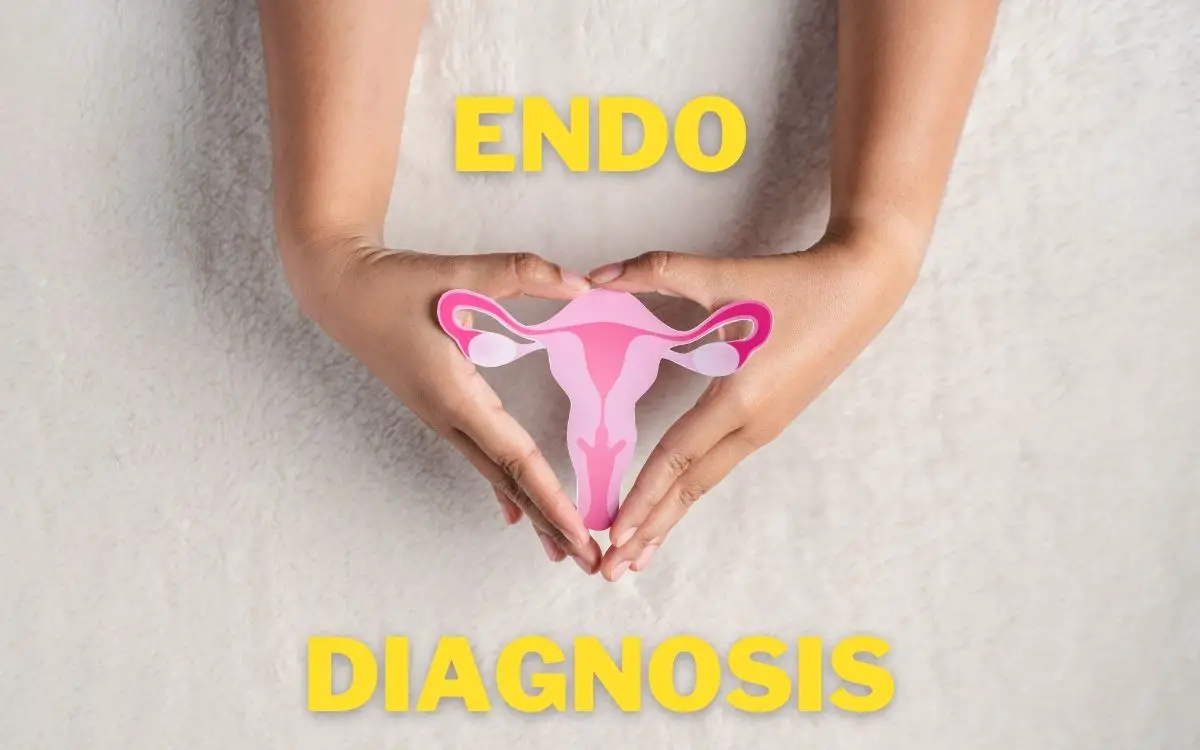How to diagnose endometriosis?
When it comes to endometriosis diagnosis, there are many ways that can help you reveal some abnormalities, and help to move further towards the successful outcome and endometriosis treatment that lots of women struggle to get.
However, there is only one definitive diagnosis, and I strongly encourage people to fight for it.
Here’s how endometriosis should be diagnosed:
Diagnosing endometriosis requires a combination of medical history, physical exam, and imaging tests. However, laparoscopic surgery remains the only definitive way to confirm the diagnosis, allowing for tissue biopsy and removal of any endometriotic growths.
More questions than answers?
Loving a woman with endometriosis brings more questions than answers if you don’t suffer from this chronic condition yourself but as a husband of a woman who has deep infiltrating stage 4 endometriosis, I had to learn all I could in order to better support my wife.
Endometriosis is a painful condition that affects millions of women worldwide. Unfortunately, diagnosis can be a challenging task, as it often presents with symptoms similar to other reproductive disorders.
Early diagnosis is crucial to ensure effective treatment and improve quality of life. In this post, we will guide you through the process of diagnosing endo, including the common symptoms, diagnostic methods, and available treatment options.
But in order to understand how is endometriosis diagnosed, I need to give you answers to the following questions:
- What is endometriosis?
- What is endometrial tissue?
- What are endometriosis symptoms?
What is endometriosis?
As I said earlier, endometriosis is a chronic disease that affects millions of women around the world, yet it is often misunderstood and misdiagnosed.
Simply put, endometriosis occurs when tissue similar to the lining of the uterus, known as the endometrium, grows outside of it. This debilitating condition causes severe endometriosis pain, pretty heavy periods, and even fertility problems.
It is estimated that about 1 in 10 women of reproductive age have endometriosis, and many of them suffer in silence for years before receiving a proper diagnosis.
The exact cause of endometriosis is not fully understood, but there are many theories. Two of the most known are believed to be related to hormonal imbalances (high estrogen levels), and genetic factors.
Endometriosis is not just a physical condition. The pain and other symptoms have a profound impact on a woman’s emotional well-being, relationships, and overall quality of life.
It is essential to approach endometriosis with empathy, understanding, and compassion.
Women with endometriosis need support, not judgment or stigma.
If you want to learn more about endometriosis, I wrote an “Endo-Tool, Endometriosis for Men” e-Book.
You can get the 1st Chapter of the e-Book for FREE, and if you like it, you’ll get a Whopping 33% Discount on the Whole Book, plus discounts on other helpful tools. You have nothing to lose but a lot to gain!
The first chapter alone contains all the comprehensive medical knowledge about endometriosis, including:
- What is endometriosis?
- What are the symptoms?
- What causes endometriosis?
- What does endometriosis look like?
- What are the stages?
- What are the types?
- What is adenomyosis and how is it related to endometriosis?
- Why do some women develop severe endo and others don’t?
- Does endometriosis cause infertility?
- How is endometriosis diagnosed?
- Do types and stages affect the treatment?
- Recurrence of endometriosis after excision surgery.
FREE Chapter of “Endo-Tool”
Endometriosis e-Book for Men
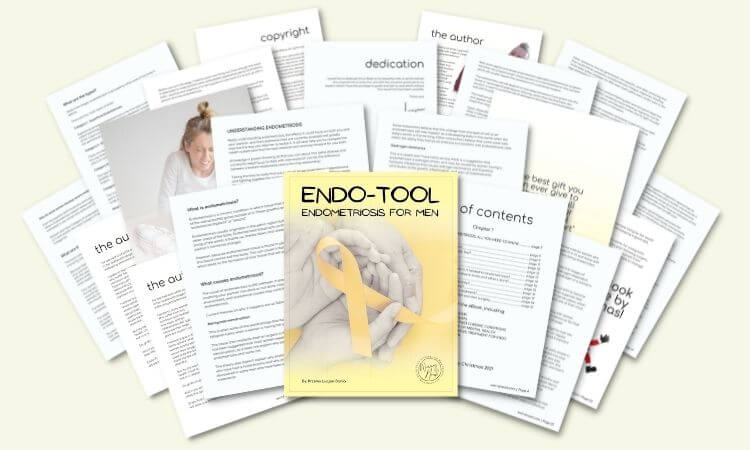
Understanding endometrial tissue…
Before we dive into diagnosing endo, it is important to understand what endometrial tissue is and how it functions.
Endometriosis tissue is a type that lines the inside of the uterus. It grows and thickens throughout the menstrual cycle, preparing the uterus for pregnancy.
If a woman does not become pregnant, the tissue is shed during menstrual periods. In some cases, endometrial tissue can grow outside of the uterus and attach itself to other organs and tissues in the body, causing endometriosis.
Endometrial tissue can grow outside of the uterus, such as on the ovaries, fallopian tubes, and other organs in the pelvis. This can cause inflammation, scarring, and pain. In some cases, endometrial tissue can also grow on organs outside of the pelvis, such as the lungs or bladder.
Symptoms of endometriosis.
Endometriosis pain is very common, but it can also cause a variety of symptoms, including:
- Pelvic pain
- Period pain
- Painful menstrual cramps
- Severe pain during or after sex
- Pain with bowel movements or urination
- Heavy menstrual bleeding
- Infertility or difficulty getting pregnant
- Fatigue (often very chronic)
- Bloating (endo-belly)
- Diarrhea or constipation (IBS-like symptom)
- Nausea (often acid reflux and heartburn)
Not all women with endometriosis experience all of these symptoms, and some women may not have any symptoms at all.
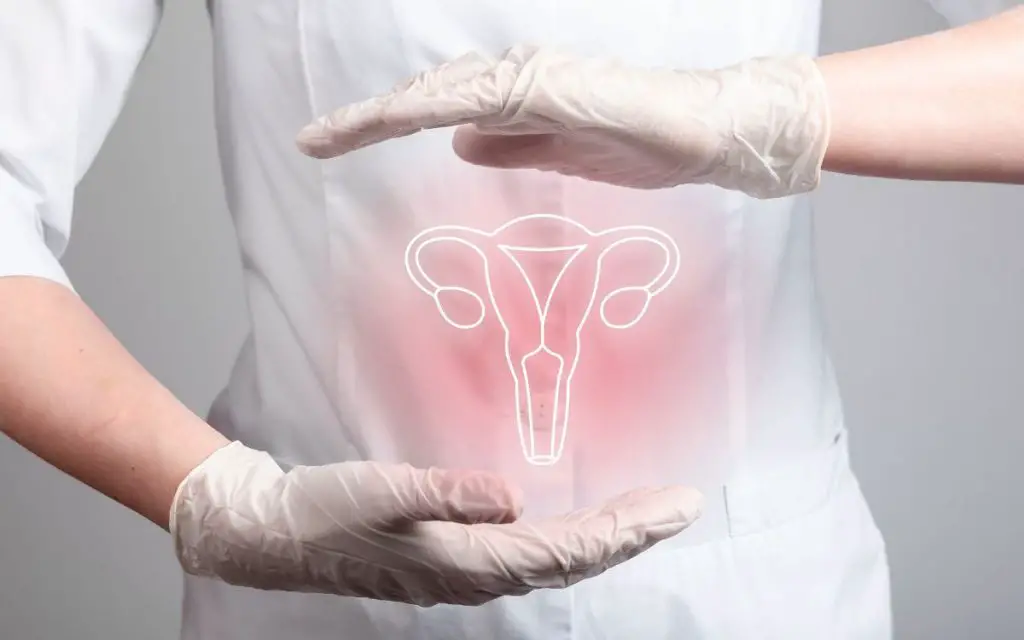
More details about endometriosis symptoms.
When it comes to painful menstrual cramps, women with endometriosis experience them. This pain is often much more severe than typical period pain. But there are also other symptoms.
In terms of pelvic pain, women may experience chronic pelvic pain that is not related to their menstrual cycles. This pain may be present all the time or may come and go.
Pain during sex is pretty common. My wife also mentioned that orgasms alone can be painful. Women with endometriosis may experience more pain during intercourse or/and after, which can significantly impact their sexual health and relationships.
Some women experience pain during bowel movements or urination.
Plenty of women with endo experience heavy menstrual bleeding, which can lead to anemia and fatigue. This is the case for my wife.
When it comes to infertility, endometriosis can cause scarring and damage to the reproductive organs, leading to infertility in some women, my including.
She always has painful ovulation. Some women also may experience pain during ovulation, which is debilitating.
Women may experience lower back pain that is not related to other underlying medical conditions but is quite often present.
Endometriosis sufferers often experience chronic fatigue, which can make it difficult to perform everyday activities.
In addition, digestive issues, such as heartburn or acid reflux, nausea, diarrhea, constipation, or even IBS.
Depression and anxiety are very common. My wife often has suicidal thoughts. Chronic pain and infertility can take a significant emotional toll on women with endo.
Diagnostic methods for endometriosis.
If you are experiencing any of the above symptoms that I mentioned, you should speak with your doctor. Ideally, have a man by your side. This very article explains the importance of a male presence.
Your doctor will typically begin by taking a detailed medical history and performing a physical examination during which will feel your abdomen for any abnormalities or tenderness. The doctor may also perform a pelvic exam to feel for any abnormalities in your genital organs.
In some cases, you may have a transvaginal ultrasound to get a closer look at your reproductive organs. During this ultrasound, a small, wand-like device is inserted which uses high-frequency sound waves to create detailed images of the uterus and ovaries.
If your doctor suspects that you may have endometriosis, they should recommend a diagnostic laparoscopic surgery to diagnose endometriosis definitively.
During surgery, a surgeon makes a small cut (or a few small incisions) rather than a big incision in the abdomen and inserts a thin tube with a camera into the body. The camera allows the surgeon to see the tissues inside your abdomen and pelvis and take tissue for biopsy if necessary.
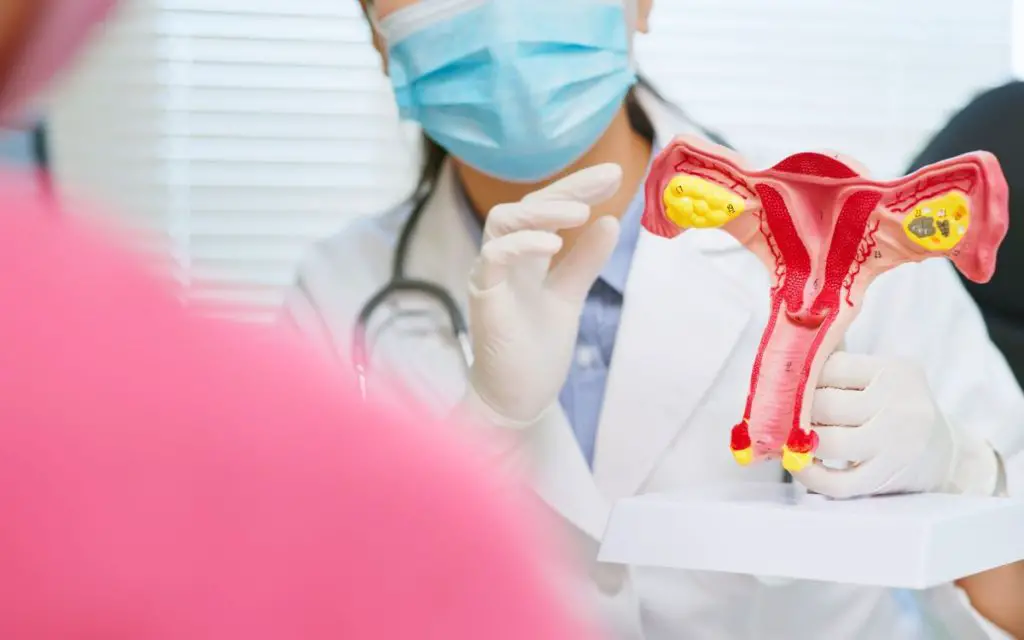
Pelvic exam.
A pelvic exam is a physical test that helps detect any abnormalities in the reproductive organs.
During the exam, the doctor will visually inspect the external genitalia and then insert a speculum to examine the cervix.
They will then use their fingers to feel for any lumps, cysts, or other abnormalities in the uterus, ovaries, and fallopian tubes.
Ultrasound.
An ultrasound is a non-invasive imaging test that uses high-frequency sound waves to create images of the inside of the body.
Ultrasound may be used to get a closer look at the reproductive organs and check for any abnormalities, such as cysts or fibroids, but ultrasound alone cannot definitively confirm the diagnosis of endometriosis.
MRI (magnetic resonance imaging).
A magnetic resonance imaging (MRI) scan uses a powerful magnetic field and radio waves to create detailed images of the inside of the body.
This test may be used to look for signs of endometriosis, such as scar tissue or endometrial tissue growth outside of the uterus.
Laparoscopy.
Laparoscopy is a surgical procedure that may be used to (and should) diagnose endo and treat endometriosis. It helps treat endometriosis (remove endometrial tissue).
During this minor surgical procedure, a small incision is made near the belly button, and a thin tube with a camera on the end is inserted. The surgeon can then view the pelvic area and check for any signs of endometriosis, such as scar tissue or endometrial tissue growth.
If endometriosis is found, the surgeon may remove it during the same procedure.
Tissue sample.
During surgery, the surgeon may also take a biopsy for further testing. This can help confirm a diagnosis of endometriosis and rule out other conditions that may have similar symptoms.
Medical records.
A detailed history can also help diagnose this illness. The doctor will ask about your symptoms, menstrual cycle, and any previous surgeries or medical conditions. They may also ask about your family history of endometriosis.
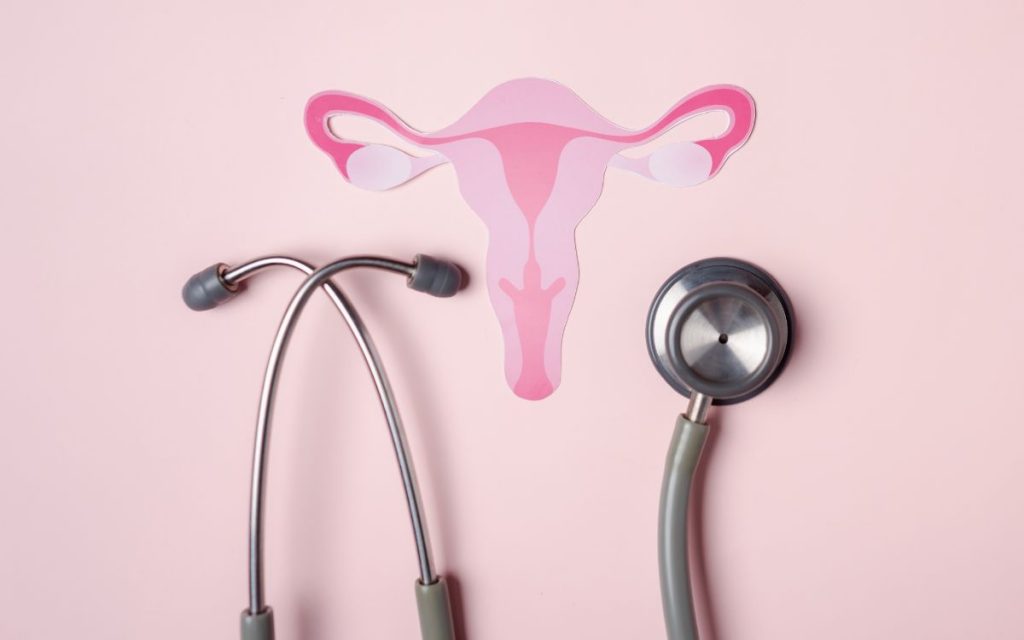
Diagnostic challenges.
Diagnosing endometriosis can be challenging due to the similarity of symptoms to other reproductive disorders.
Many women with endometriosis are misdiagnosed or go undiagnosed for years, which can significantly impact their quality of life.
My wife was also diagnosed with fibromyalgia, which is a common chronic disorder that affects 31% of women with endo.
Furthermore, many women are hesitant to seek medical attention for their symptoms due to a lack of awareness or fear of judgment.
Endometriosis diagnosis can be a challenging and frustrating experience for many women. It often takes on average 8 years to receive a proper diagnosis, during which time the symptoms can worsen and interfere with daily life.
What’s next?
Endometriosis diagnosis takes time, but once diagnosed, the next step is to determine the best course for treating endometriosis.
The treatment options for endometriosis will depend on the type and stage of endometriosis, age, and desire for future fertility.
Pain relief.
Pain relievers, such as nonsteroidal anti-inflammatory drugs (NSAIDs), can help alleviate menstrual pain and cramping associated with endometriosis.
If your pain persists, the doctor may recommend hormone therapy to help regulate your menstrual cycle.
I like alternative treatments (holistic approach to treatment for endometriosis).
Surgery.
If endometriosis is severe or causing fertility problems, your doctor may be recommending surgery to remove the endometrial tissue which is often done with laparoscopy and general anesthesia.
Surgery is usually considered a last resort after other treatment options have been tried and found ineffective.
I have learned that for many women (including my wife), surgery is the best option for the long-term relief of symptoms and to improve the chances of becoming pregnant.


About Me
Hi, I’m Lucjan! The reason why I decided to create this blog was my beautiful wife, who experienced a lot of pain in life, but also the lack of information about endometriosis and fibromyalgia for men…
